Analysis of Programs by Strategic Outcome - 2016–17 Report on Plans and Priorities - Treasury Board of Canada Secretariat
Section II: Analysis of Programs by Strategic Outcome
Strategic Outcome: Good governance and sound stewardship to enable efficient and effective service to Canadians
| Performance Indicators | Targets | Date to Be Achieved |
|---|---|---|
| Canada's ranking in The World Bank's Worldwide Governance Indicators for the third indicator, Governance Effectiveness | Top ten among Organisation for Economic Co-operation and Development (OECD) member countries | Annually |
Program 1.1: Decision-Making Support and Oversight
Description
Through the Decision-Making Support and Oversight program, the Treasury Board of Canada Secretariat supports the Treasury Board in its roles as management board of the Government of Canada and as expenditure manager in the government-wide expenditure cycle. The objective is to support the government in promoting value for money and results for Canadians in programs and operations.
The Secretariat achieves program results by providing independent strategic advice, analysis, guidance and oversight of programs, operations, and expenditures. It reviews departmental submissions, provides recommendations to the Treasury Board, and coordinates and reports on the allocation of expenditures across government organizations and programs.

Figure 4A. Decision-Making Support and Oversight as a proportion of the Secretariat's 2016–17 planned operational spending - Text version
| Decision-Making Support and Oversight | 21% |
|---|---|
| Management Policies Development and Monitoring | 29% |
| Government-Wide Program Design and Delivery | 22% |
| Internal Services | 28% |
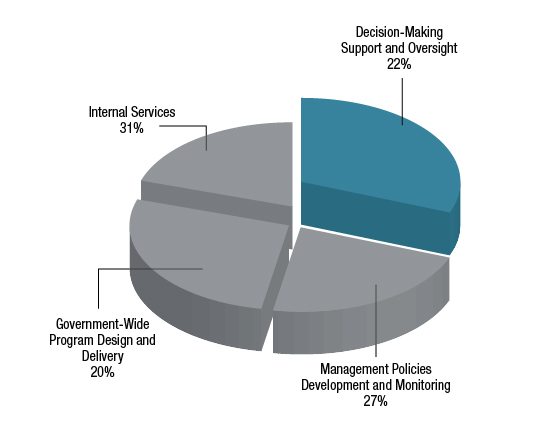
Figure 4B. Decision-Making Support and Oversight as a proportion of the Secretariat's 2016–17 planned FTEs - Text version
| Decision-Making Support and Oversight | 22% |
|---|---|
| Management Policies Development and Monitoring | 27% |
| Government-Wide Program Design and Delivery | 20% |
| Internal Services | 31% |
| 2016–17 Main Estimates |
2016–17 Planned Spending |
2017–18 Planned Spending |
2018–19 Planned Spending |
|---|---|---|---|
Table 19 Notes
|
|||
| 49,543,385 | 50,579,535 | 49,568,557 | 49,973,390 |
| 2016–17 | 2017–18 | 2018–19 |
|---|---|---|
| 392 | 388 | 390 |
| Expected Results | Performance Indicators | Targets | Date to Be Achieved |
|---|---|---|---|
| The Secretariat promotes value for money and results for Canadians in programs and operations | Federal organizations agree that the Secretariat provides an effective challenge function | 70% |
Planning Highlights
For 2016–17, the Secretariat will increase its efforts to promote value for money and results for Canadians in its programs and operations. The primary focus of this program will be to work with central agencies to implement budget measures in a timelier manner and to help improve parliamentary scrutiny of government spending. The program will also support the use of innovative approaches to policy and program delivery to address existing problems.
Sub-Program 1.1.1: Cabinet Decision Support
Description
Through the Cabinet Decision Support sub-program, the Secretariat supports decision making by providing advice regarding resource allocation, risks, compliance with rules and policies, and alignment with the Government of Canada's objectives and priorities. The objective is to provide the Treasury Board and other Cabinet committees with the best possible advice and analysis regarding departmental submissions to achieve results for Canadians.
The Secretariat achieves sub-program results by reviewing and providing advice and guidance on Treasury Board submissions and Memoranda to Cabinet. The Secretariat plays a challenge function role in reviewing Cabinet proposals, including performance strategies and implementation plans. It also supports the Treasury Board as a committee of ministers in considering Governor in Council regulations and Orders in Council.

Figure 5A. Cabinet Decision Support as a proportion of the Secretariat's 2016–17 planned spending for Decision-Making Support and Oversight - Text version
| Cabinet Decision Support | 66% |
|---|---|
| Expenditure Analysis and Allocation Management | 34% |
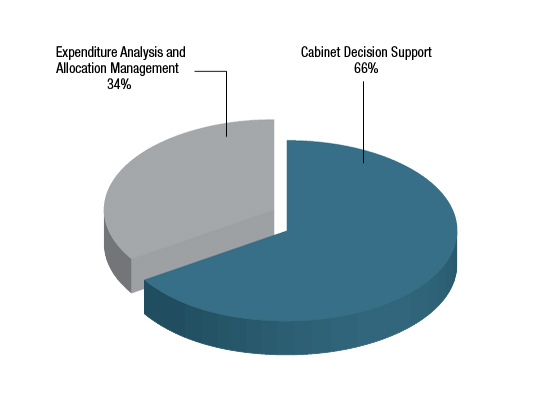
Figure 5B. Cabinet Decision Support as a proportion of the Secretariat's 2016–17 planned FTEs for Decision-Making Support and Oversight - Text version
| Cabinet Decision Support | 66% |
|---|---|
| Expenditure Analysis and Allocation Management | 34% |
| 2016–17 Planned Spending |
2017–18 Planned Spending |
2018–19 Planned Spending |
|---|---|---|
Table 24 Notes
|
||
| 33,600,020 | 33,507,728 | 33,615,327 |
| 2016–17 | 2017–18 | 2018–19 |
|---|---|---|
| 256 | 259 | 259 |
| Expected Results | Performance Indicators | Targets | Date to Be Achieved |
|---|---|---|---|
Table 26 Notes
|
|||
| Cabinet makes decisions that are supported by evidence | Per cent of applicable Cabinet documents that have quality performance, evaluation, and costing information (as per the Secretariat's guidance) | 100% | |
| Costing information is transparent and of a high quality to support decision making | Accuracy of estimated costs presented to Parliament, compared with actual costs | To be determinedtable 26 note * | |
Planning Highlights
Cabinet and Parliament require accurate and timely performance and financial information in order to make informed decisions. At present, less than half of large departments are using information from their performance measurement frameworks and strategies, their evaluations and other results-based management tools to support their proposals to Cabinet. In addition, the capacity to identify the costs of legislative and program proposals varies among departments.
The planned priority initiatives are:
- Renew the Policy on Management, Resources and Results Structures and the Treasury Board submission guidance to improve information on resource allocation, performance measurement and reporting to Parliament and Canadians.
- Improve departmental costing analysis for all proposed legislation and programs through a standardized approach to estimating the cost of proposals.
Sub-Program 1.1.2: Expenditure Analysis and Allocation Management
Description
Through the Expenditure Analysis and Allocation Management sub-program, the Secretariat provides advice and analysis related to government expenditures, including compensation. It also supports decision making by providing reliable, detailed and timely information to Parliament and to the public, and by reporting on spending and resource allocation. The objective is to promote accountability and transparency in the management of government expenditures.
The Secretariat achieves sub-program results by working closely with federal departments and most Crown corporations, and by conducting research and analysis on expenditure trends to support expenditure planning, resource allocation and results-based management and decision making.
Expenditures on whole-of-government reporting to Parliament and to Canadians are also included under this sub-program.
The primary legislation underpinning this sub-program's activities is the Financial Administration Act, as well as the Appropriation Acts associated with the Estimates.
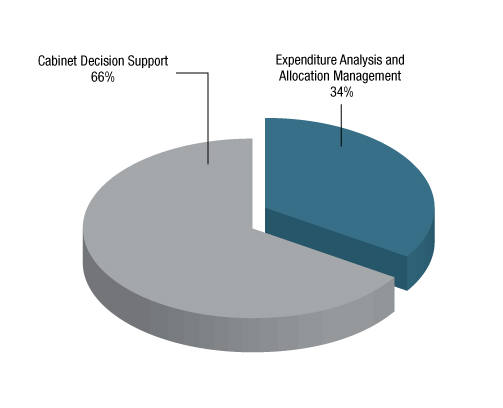
Figure 6A. Expenditure Analysis and Allocation Management as a proportion of the Secretariat's 2016–17 planned spending for Decision-Making Support and Oversight - Text version
| Cabinet Decision Support | 66% |
|---|---|
| Expenditure Analysis and Allocation Management | 34% |
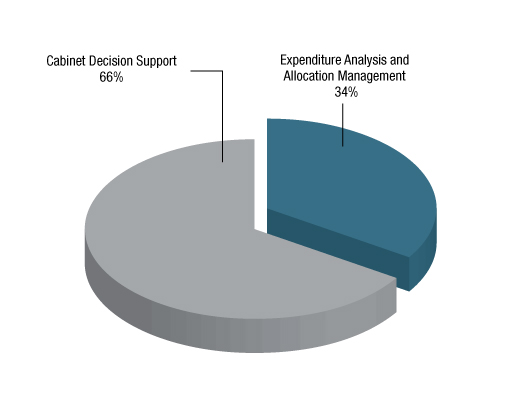
Figure 6B. Expenditure Analysis and Allocation Management as a proportion of the Secretariat's 2016–17 planned FTEs for Decision-Making Support and Oversight - Text version
| Cabinet Decision Support | 66% |
|---|---|
| Expenditure Analysis and Allocation Management | 34% |
| 2016–17 Planned Spending |
2017–18 Planned Spending |
2018–19 Planned Spending |
|---|---|---|
| 16,979,514 | 16,060,829 | 16,358,063 |
| 2016–17 | 2017–18 | 2018–19 |
|---|---|---|
| 136 | 129 | 130 |
| Expected Results | Performance Indicators | Targets | Date to Be Achieved |
|---|---|---|---|
Table 31 Notes
|
|||
| Government expenditures are timely and managed in an effective manner | The Consolidated Financial Statements of the Government of Canada receive an unmodified opinion from the Auditor General of Canada | Yes, 100% of the time | |
| Per cent of applicable budget measures that are reflected in the Estimates within one fiscal year | 100% | ||
| Resources are aligned with priorities | Total spending allocated to priorities and to experimentation | To be determinedtable 31 note * | |
Planning Highlights
Opportunities exist to implement budget measures faster, and to improve the information available for Parliament's scrutiny of government spending.
At present, some time may elapse between when an initiative is announced and when the organization receives its funding. In addition, the problems that federal programs seek to address are often complex and do not lend themselves to obvious solutions. These problems could benefit from program and policy innovation, informed by ongoing testing and measurement of potential new approaches. There is an opportunity to explore specific incentives or requirements to ensure that departments test, measure and learn from new approaches.
The planned priority initiatives are:
- Work with the Privy Council Office to improve reporting to Parliament by strengthening the oversight of taxpayer dollars and the clarity and consistency of financial reporting, and by ensuring consistency and maximum alignment between the Budget and the Estimates, and the Estimates and the Public Accounts.
- Work with other departments to ensure that a fixed percentage of program funds is devoted to experimenting with new approaches to existing problems, and to measuring program impacts.
Program 1.2: Management Policies Development and Monitoring
Description
Through the Management Policies Development and Monitoring Program, the Secretariat supports the Treasury Board in its role of establishing principles for sound governance and management by setting government-wide policy direction in targeted areas. The objective is to have a sound management policy framework for the Government of Canada.
The Secretariat achieves program results by communicating clear management expectations to deputy heads and by adopting principles-based and risk-informed approaches to monitoring policy compliance. The Secretariat provides reviews, leads implementation, and supports and monitors policies and departmental performance under several of areas of management. The Secretariat also engages with functional communities and undertakes outreach and monitoring to promote policy compliance and build the capacity of functional communities.
This program is underpinned by legislation such as the Financial Administration Act and the Public Service Employment Act.
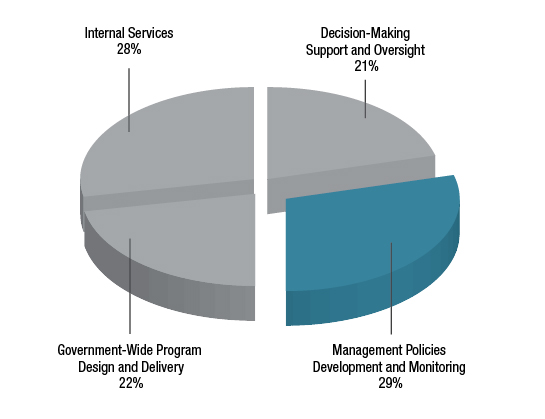
Figure 7A. Management Policies Development and Monitoring as a proportion of the Secretariat's 2016–17 planned operational spending - Text version
| Decision-Making Support and Oversight | 21% |
|---|---|
| Management Policies Development and Monitoring | 29% |
| Government-Wide Program Design and Delivery | 22% |
| Internal Services | 28% |

Figure 7B. Management Policies Development and Monitoring as a proportion of the Secretariat's 2016–17 planned FTEs - Text version
| Decision-Making Support and Oversight | 22% |
|---|---|
| Management Policies Development and Monitoring | 27% |
| Government-Wide Program Design and Delivery | 20% |
| Internal Services | 31% |
| 2016–17 Main Estimates |
2016–17 Planned Spending |
2017–18 Planned Spending |
2018–19 Planned Spending |
|---|---|---|---|
Table 34 Notes
|
|||
| 67,614,269 | 68,090,606 | 68,236,105 | 66,819,202 |
| 2016–17 | 2017–18 | 2018–19 |
|---|---|---|
| 493 | 483 | 477 |
| Expected Results | Performance Indicators | Targets | Date to Be Achieved |
|---|---|---|---|
| A streamlined policy suite that supports modern management | Per cent of policy instruments that have been streamlined | 90% | |
| Per cent of departments that have implemented renewed policies within expected timelines | 90% | ||
| Per cent of organizations that agree that the new policy suite is streamlined | 75% |
Planning Highlights
The Secretariat currently supports more than 200 Treasury Board policy instruments, including 8 frameworks, 74 policies, 73 directives and 79 standards. This creates a situation where rules and incentives lack clear accountabilities and are hard to find and apply.
The planned priority initiative is:
- Streamline the Treasury Board policy suite, providing incentives and rules that have clear accountabilities and that are easy to find and to understand.
Sub-Program 1.2.1: Financial Management Policy
Description
Through the Financial Management Policy sub-program, the Secretariat provides direction to federal organizations on proper stewardship of taxpayers' dollars and government assets. It works to strengthen financial management, management of real property and materiel, investment planning and project management, and procurement across the federal public service. The objective is to promote sound stewardship and value for money and provide direction on standardizing the management of public resources, including in the areas of financial management and assets and acquired services, across the Government of Canada.
The Secretariat achieves sub-program results by developing and maintaining policies, guidance and practices; nurturing sustainable and professional communities (e.g., finance, procurement, materiel management, real property); monitoring departmental performance and compliance; and helping to improve the overall efficiency of government operations. The work includes community development, learning and outreach activities.
The primary legislation issuing program authority is the Financial Administration Act.
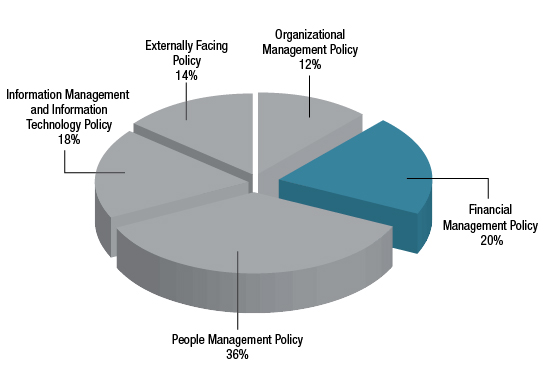
Figure 8A. Financial Management Policy as a proportion of the Secretariat's 2016–17 planned spending for Management Policies Development and Monitoring - Text version
| Financial Management Policy | 20% |
|---|---|
| People Management Policy | 36% |
| Information Management and Information Technology Policy | 18% |
| Externally Facing Policy | 14% |
| Organizational Management Policy | 12% |
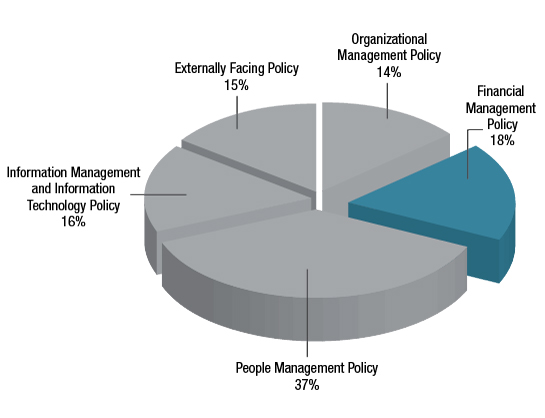
Figure 8B. Financial Management Policy as a proportion of the Secretariat's 2016–17 planned FTEs for Management Policies Development and Monitoring - Text version
| Financial Management Policy | 18% |
|---|---|
| People Management Policy | 37% |
| Information Management and Information Technology Policy | 16% |
| Externally Facing Policy | 15% |
| Organizational Management Policy | 14% |
| 2016–17 Planned Spending |
2017–18 Planned Spending |
2018–19 Planned Spending |
|---|---|---|
| 13,356,119 | 13,369,822 | 13,563,737 |
| 2016–17 | 2017–18 | 2018–19 |
|---|---|---|
| 89 | 88 | 88 |
| Expected Results | Performance Indicators | Targets | Date to Be Achieved |
|---|---|---|---|
| Financial management policies are effective in promoting sound stewardship and value for money across the Government of Canada | Per cent of organizations that have implemented an ongoing risk-based monitoring program for all three control areas to support the effectiveness of their internal controls over financial reporting | 80% | |
| Per cent of organizations that met key policy requirements for management of acquired services and assets | 80% | ||
| In collaboration with Public Services and Procurement Canada, government procurement is easier and delivers better value for dollars spent | Per cent of all department contracts that used mandatory and non-mandatory standing offers | 20% | |
| Per cent of contracts over $25,000 awarded through competitive processes | 80% |
Planning Highlights
Treasury Board policies related to procurement and certain areas of financial management are outdated and do not support intelligent risk taking and innovation. This affects the delivery of many Government of Canada programs and services, as well as the work of more than 22,000 public servants who are involved in reviewing and reporting on financial transactions and managing assets.
The planned priority initiatives are:
- Modernize the Government of Canada's approach to comptrollership.
- Work with Public Services and Procurement Canada to modernize procurement by implementing practices that are simpler and less administratively burdensome and that better support broader economic, social and green goals.
Sub-Program 1.2.2: People Management Policy
Description
Through the People Management Policy sub-program, the Secretariat supports activities of the Treasury Board in its role as the employer of the core public administration. It provides government-wide leadership through enabling policy frameworks, strategic engagements and infrastructure for human resources services, to achieve high performance and leadership excellence in people management. It enables prudent fiscal management of resources in the areas of classification, total compensation (collective bargaining, wages and salaries, terms and conditions of employment, pensions and benefits) and labour relations.
The Secretariat achieves sub-program results by developing and monitoring the implementation of policy frameworks for executive management, classification, values and ethics and official languages. It establishes people management performance indicators; assesses and reports on organizations' performance in people management; and collects and provides data on the public service. Its work includes community development, learning and outreach activities.
This sub-program is underpinned by legislation such as the Financial Administration Act, the Public Service Labour Relations Act, the Public Service Employment Act and the Official Languages Act.

Figure 9A. People Management Policy as a proportion of the Secretariat's 2016–17 planned spending for Management Policies Development and Monitoring - Text version
| Financial Management Policy | 20% |
|---|---|
| People Management Policy | 36% |
| Information Management and Information Technology Policy | 18% |
| Externally Facing Policy | 14% |
| Organizational Management Policy | 12% |
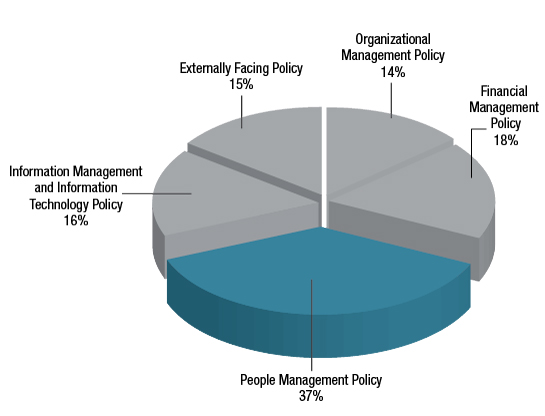
Figure 9B. People Management Policy as a proportion of the Secretariat's 2016–17 planned FTEs for Management Policies Development and Monitoring - Text version
| Financial Management Policy | 18% |
|---|---|
| People Management Policy | 37% |
| Information Management and Information Technology Policy | 16% |
| Externally Facing Policy | 15% |
| Organizational Management Policy | 14% |
| 2016–17 Planned Spending |
2017–18 Planned Spending |
2018–19 Planned Spending |
|---|---|---|
| 24,603,257 | 25,874,680 | 24,322,840 |
| 2016–17 | 2017–18 | 2018–19 |
|---|---|---|
| 183 | 184 | 181 |
| Expected Results | Performance Indicators | Targets | Date to Be Achieved |
|---|---|---|---|
| A safe and respectful public service workplace | Per cent of employees who indicate that, overall, their organization treats them with respect | Improvement over 2014 PSES results | |
| Per cent of employees who indicate that their organization works hard to create a workplace that prevents harassment | Improvement over 2014 PSES results | ||
| Per cent of employees who indicate that they can initiate a formal recourse process without fear of reprisal | Improvement over 2014 PSES results | ||
| The public service and its leaders reflect Canada's diversity | Per cent of executive employees (compared with workforce availability) who self-identify as:
|
Improvement over previous year | |
| Per cent of offices delivering bilingual federal services, where required by regulation | 90% | ||
| A healthy public service workplace that supports mental health | Per cent of the public service population on disability due to mental health–related claims | Comparable to large employers in Canada |
Planning Highlights
The public service faces a number of workforce management challenges that need to be addressed:
- Mental health—47 per cent of disability claims in 2014 were related to mental health.
- Diversity and discrimination—three of the four employment equity groups (women, visible minorities and Aboriginal peoples) are under-represented among public service executives; female, visible minority, Aboriginal peoples and disabled employees continue to indicate that they have faced discrimination in the workplace (8 per cent, 13 per cent, 15 per cent and 26 per cent of each group, respectively).
- Harassment—19 per cent of employees report that they have been harassed in the workplace.
- Official languages—out of 11,500 federal service locations, 34 per cent provide bilingual services as per regulations; this does not include online services, toll-free telephone lines and other types of service delivery available in both official languages across Canada at all times.
The planned priority initiatives are:
- Align with the National Standard of Canada for Psychological Health and Safety in the Workplace.
- Take action to support the Government of Canada's commitment to transparent, merit-based appointments, to help ensure gender parity and that Indigenous Canadians and minority groups are better reflected in positions of leadership.
- Take action to ensure that the public service is a workplace free from harassment and sexual violence.
- Ensure that all federal services are delivered in full compliance with the Official Languages Act, with the support of Canadian Heritage.
Sub-Program 1.2.3: Information Management and Information Technology Policy
Description
Through the Information Management and Information Technology Policy sub-program, the Secretariat provides strategic direction and leadership for the enterprise and to federal organizations on record keeping, data management, web content management, access to information and privacy protection, and management of cyber-security and information technology. The objective is to enable information to be safeguarded as a public trust and managed as a strategic asset.
The Secretariat promotes open information and allows Canadians to exercise their right to access and use information, while protecting personal information against unauthorized collection, use and disclosure. Continual improvement of information management and information technology across the Government of Canada is encouraged by promoting principles and directives that support the achievements of the Government of Canada's enterprise transformation objectives, and enable departments to meet priorities.
The Secretariat achieves sub-program results by developing and maintaining policy instruments, encouraging collaboration between government institutions, monitoring and overseeing departmental policy performance, and providing leadership. The work includes community development, learning and outreach activities.
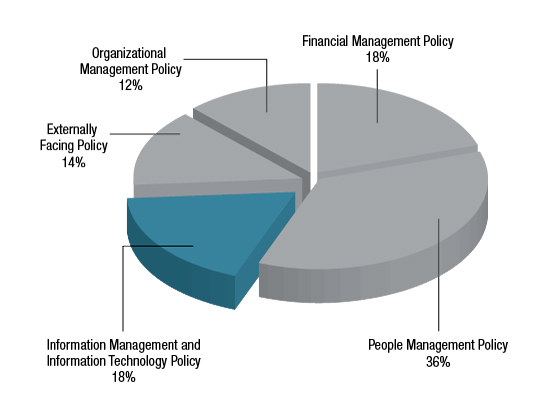
Figure 10A. Information Management and Information Technology Policy as a proportion of the Secretariat's 2016–17 planned spending for Management Policies Development and Monitoring - Text version
| Financial Management Policy | 18% |
|---|---|
| People Management Policy | 36% |
| Information Management and Information Technology Policy | 18% |
| Externally Facing Policy | 14% |
| Organizational Management Policy | 12% |

Figure 10B. Information Management and Information Technology Policy as a proportion of the Secretariat's 2016–17 planned FTEs for Management Policies Development and Monitoring - Text version
| Financial Management Policy | 18% |
|---|---|
| People Management Policy | 37% |
| Information Management and Information Technology Policy | 16% |
| Externally Facing Policy | 15% |
| Organizational Management Policy | 14% |
| 2016–17 Planned Spending |
2017–18 Planned Spending |
2018–19 Planned Spending |
|---|---|---|
| 12,188,949 | 11,831,816 | 11,953,497 |
| 2016–17 | 2017–18 | 2018–19 |
|---|---|---|
| 78 | 75 | 74 |
| Expected Results | Performance Indicators | Targetstable 51 note * | Date to Be Achieved |
|---|---|---|---|
Table 51 Notes
|
|||
| Federal institutions manage information and technology effectively | Per cent of organizations that have implemented strategies and plans to effectively manage
|
To be determined | |
| Canadians have timely access to government information and their personal information held by government | Per cent of access to information requests received within established timelines | 85% | |
| Per cent of personal information requests received within established timelines | 85% | ||
Planning Highlights
About 240 institutions are subject to the Access to Information Act and the Privacy Act. In the face of the growing number and complexity of requests, maintaining service standards remains challenging.
The Access to Information Act has not been substantially amended since 1983 and does not reflect modern technology. There are opportunities to strengthen the Access to Information and Privacy programs to enhance the openness of government, and to make it easier for Canadians to access government information and their personal information held by government.
The planned priority initiatives are:
- Work with the Department of Justice Canada and the Privy Council Office (Democratic Institutions) to review and propose changes to the Access to Information Act, including empowering the Information Commissioner of Canada to order the release of government information, and expanding the coverage of the Act to apply appropriately to the Prime Minister's Office, ministers' offices and administrative institutions that support Parliament and the courts (subject to Cabinet and funding approvals).
- Improve Canadians' access to their personal information (subject to Cabinet and funding approvals).
Sub-Program 1.2.4: Externally Facing Policy
Description
Through the Externally Facing Policy sub-program, the Secretariat provides strategic direction and guidance to federal organizations to effectively manage Government of Canada communications and services to Canadians. In addition, it supports good regulatory practices for the benefit of citizens and stakeholders. The objectives are to promote high-quality, beneficial, consistent and open relationships and interactions between the Government of Canada and citizens and other stakeholders, and to support implementation of the Cabinet Directive on Regulatory Management.
The Secretariat achieves sub-program results by providing strategic direction and guidance in the areas of Government of Canada services, communications and regulations, and by monitoring organizational policy compliance. The work includes community development, learning and outreach activities.
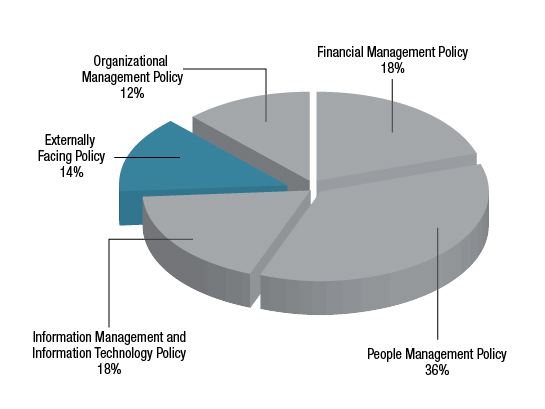
Figure 11A. Externally Facing Policy as a proportion of the Secretariat's 2016–17 planned spending for Management Policies Development and Monitoring - Text version
| Financial Management Policy | 18% |
|---|---|
| People Management Policy | 36% |
| Information Management and Information Technology Policy | 18% |
| Externally Facing Policy | 14% |
| Organizational Management Policy | 12% |
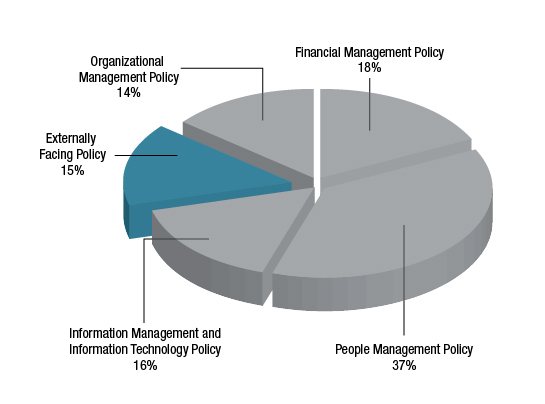
Figure 11B. Externally Facing Policy as a proportion of the Secretariat's 2016–17 planned FTEs for Management Policies Development and Monitoring - Text version
| Financial Management Policy | 18% |
|---|---|
| People Management Policy | 37% |
| Information Management and Information Technology Policy | 16% |
| Externally Facing Policy | 15% |
| Organizational Management Policy | 14% |
| 2016–17 Planned Spending |
2017–18 Planned Spending |
2018–19 Planned Spending |
|---|---|---|
Table 54 Notes
|
||
| 9,489,857 | 8,755,733 | 8,540,856 |
| 2016–17 | 2017–18 | 2018–19 |
|---|---|---|
| 76 | 69 | 66 |
| Expected Results | Performance Indicators | Targetstable 56 note * | Date to Be Achieved |
|---|---|---|---|
Table 56 Notes
|
|||
| Canadians can actively engage with the federal government through multiple digital channels | Per cent of engagement through multiple digital channels | To be determined | |
| Integrity of government advertising is strengthened | Per cent of Canadians who perceive government advertising as fair and non-partisan | To be determined | |
| Improved online federal government service delivery | Per cent of priority federal government services that are available online | To be determined | |
| Degree of client satisfaction with federal government services (quality, timeliness and efficiency) | To be determined | ||
| Per cent of priority services in key departments that meet established service standards | To be determined | ||
Planning Highlights
Citizens and businesses expect better quality and more accessible services from the Government of Canada, yet a number of services still cannot be completed online. Government communications could be more responsive to the rapidly changing needs of citizens by using technology to connect and interact with citizens about government initiatives, policies, programs and services.
The planned priority initiatives are:
- Modernize the Communications Policy of the Government of Canada to reflect the modern digital environment.
- Strengthen oversight of government advertising.
- Develop a new service strategy that aims to create a single online window for all government services (subject to Cabinet and funding approvals).
- Work with service delivery departments to establish new performance standards, and set up a mechanism to rigorously assess and report publicly on the performance of key government services (subject to Cabinet and funding approvals).
Sub-Program 1.2.5: Organizational Management Policy
Description
Through the Organizational Management Policy sub-program, the Secretariat provides leadership and direction in the areas of results-based management, risk management, internal audit, evaluation and non–information technology security. The Secretariat develops policies that support the ongoing improvement of the relevance, effectiveness and value for money of programs and operations across the Government of Canada. Through the Management Accountability Framework, it provides strategic direction to support and improve the practices and accountability of deputy heads across departments. The objective is to promote effective and standard corporate management practices across the Government of Canada.
The Secretariat achieves sub-program results by developing and maintaining policy instruments and engaging with functional communities to build capacity and promote management excellence. It also monitors policy compliance in the area of corporate management. The work includes community development, learning and outreach activities.
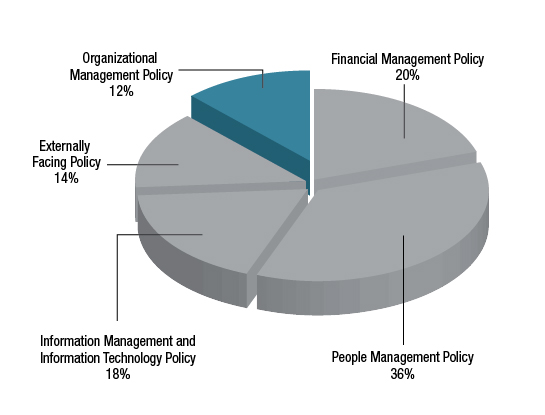
Figure 12A. Organizational Management Policy as a proportion of the Secretariat's 2016–17 planned spending for Management Policies Development and Monitoring - Text version
| Financial Management Policy | 20% |
|---|---|
| People Management Policy | 36% |
| Information Management and Information Technology Policy | 18% |
| Externally Facing Policy | 14% |
| Organizational Management Policy | 12% |

Figure 12B. Organizational Management Policy as a proportion of the Secretariat's 2016–17 planned FTEs for Management Policies Development and Monitoring - Text version
| Financial Management Policy | 18% |
|---|---|
| People Management Policy | 37% |
| Information Management and Information Technology Policy | 16% |
| Externally Facing Policy | 15% |
| Organizational Management Policy | 14% |
| 2016–17 Planned Spending |
2017–18 Planned Spending |
2018–19 Planned Spending |
|---|---|---|
| 8,452,423 | 8,404,054 | 8,438,272 |
| 2016–17 | 2017–18 | 2018–19 |
|---|---|---|
| 67 | 67 | 67 |
| Expected Results | Performance Indicators | Targets | Date to Be Achieved |
|---|---|---|---|
| Organizational management policies promote effective and consistent corporate management practices across the Government of Canada | Organizations agree that the Secretariat's policy centres for organizational management provide useful tools and guidance | 70% | |
| Per cent of federal organizations that have received a “generally conforms” on a practice inspection of their internal audit function | 95% | ||
| Performance information is used by departments to inform management practices and processes | Per cent of departments that use performance information to
|
100% |
Planning Highlights
The use of quality data and evidence in Cabinet decision making requires strengthened government-wide expertise in results measurement and a strong commitment throughout the organization to collect, store, analyze and use data effectively. The latest Management Accountability Framework results reveal the need for consistency in departments' use of performance information to identify risks, establish priorities, and support resource allocations.
The planned priority initiative is:
- Work with departments to improve their use of evidence and data, and instill a stronger culture of performance measurement, evaluation and innovation in program and policy design and delivery.
Program 1.3: Government-Wide Program Design and Delivery
Description
Through the Government-Wide Program Design and Delivery program, the Secretariat designs and delivers activities, systems, services and operations with, for, or on behalf of other organizations in the Government of Canada. It also establishes a platform for transformational initiatives. The objective is to provide consistent and cost-controlled operations across the Government of Canada.
The Secretariat achieves program results by developing and delivering solutions where whole-of-government leadership is required, or where transformation and standardization can be achieved to improve quality and value for money.

Figure 13A. Government-Wide Program Design and Delivery as a proportion of the Secretariat's 2016–17 planned operational spending - Text version
| Decision-Making Support and Oversight | 21% |
|---|---|
| Management Policies Development and Monitoring | 29% |
| Government-Wide Program Design and Delivery | 22% |
| Internal Services | 28% |
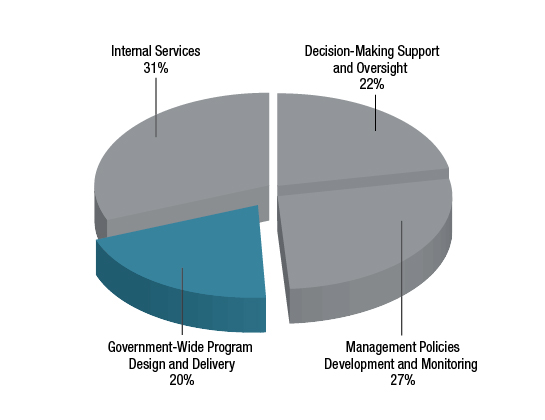
Figure 13B. Government-Wide Program Design and Delivery as a proportion of the Secretariat's 2016–17 planned FTEs - Text version
| Decision-Making Support and Oversight | 22% |
|---|---|
| Management Policies Development and Monitoring | 27% |
| Government-Wide Program Design and Delivery | 20% |
| Internal Services | 31% |
| 2016–17 Main Estimates |
2016–17 Planned Spending |
2017–18 Planned Spending |
2018–19 Planned Spending |
|---|---|---|---|
Table 64 Notes
|
|||
| 53,732,931 | 53,256,595 | 52,997,096 | 53,642,559 |
| 2016–17 | 2017–18 | 2018–19 |
|---|---|---|
| 354 | 356 | 349 |
| Expected Results | Performance Indicators | Targets | Date to Be Achieved |
|---|---|---|---|
Table 66 Notes
|
|||
| The Secretariat promotes consistency in systems and operations across the Government of Canada | Employees agree that they have the necessary tools to do their jobs | Improvement over 2014 PSES results | |
| Per cent of organizations that agree that the Secretariat provides effective guidance with respect to enterprise-wide systems and operations | To be determinedtable 66 note * | ||
Planning Highlights
For 2016–17, in addition to setting government-wide policy direction in key management areas, the Secretariat will lead a number of priority initiatives to help design and deliver activities, systems, services and operations with, for, or on behalf of other organizations in the Government of Canada.
This program will focus on renewing outstanding collective bargaining agreements, accelerating the open data initiative, and continuing to transform enterprise-wide back office functions.
Sub-Program 1.3.1: Pensions and Benefits
Description
Through the Pensions and Benefits sub-program, the Secretariat supports the Treasury Board as sponsor and manager of the federal public service pension plan and group benefit plans. The objective is to provide consistent, sustainable and well-managed pensions and benefits to employees across the core public service.
The Secretariat oversees administration of the public service pension plan, providing direction to Public Services and Procurement Canada. Working with major insurance companies, it undertakes management and oversight responsibilities for other federal benefit programs. The scope of the Pensions and Benefits Sector includes policy and program development for public service pensions, benefit plans, and disability and sick leave management (Workplace Wellness and Productivity Strategy).
The Secretariat also manages stakeholder relations, provides information to pension and benefit plan members on entitlements, and communicates changes to the public service pension and benefits plans. The Secretariat supports the Secretary and the Treasury Board in setting the terms and conditions relating to eligibility, premiums, contributions, and other arrangements.
The Secretariat is managing insurance benefit plans for employees, pensioners and dependants, which cover health care, dental and disability. The work includes oversight of plan contracts, communications, and initiatives for managing costs.

Figure 14A. Pensions and Benefits as a proportion of the Secretariat's 2016–17 planned spending for Government-Wide Program Design and Delivery - Text version
| Pensions and Benefits | 16% |
|---|---|
| Labour Relations | 38% |
| Government-Wide Operations | 19% |
| Transformation Leadership | 27% |

Figure 14B. Pensions and Benefits as a proportion of the Secretariat's 2016–17 planned FTEs for Government-Wide Program Design and Delivery - Text version
| Pensions and Benefits | 34% |
|---|---|
| Labour Relations | 23% |
| Government-Wide Operations | 26% |
| Transformation Leadership | 17% |
| 2016–17 Planned Spending |
2017–18 Planned Spending |
2018–19 Planned Spending |
|---|---|---|
Table 69 Notes
|
||
| 9,896,977 | 12,500,625 | 10,009,953 |
| 2016–17 | 2017–18 | 2018–19 |
|---|---|---|
| 131 | 135 | 126 |
| Expected Results | Performance Indicators | Targets | Date to Be Achieved |
|---|---|---|---|
| Modern pension and benefit plans that help make the government a modern employer | Per cent of key government partners that agree that the Secretariat provides quality tools and guidance in the area of pensions and benefits | 80% |
Planning Highlights
The Secretariat will continue to strengthen its mandate related to the management and oversight of the pension and group benefit plans for the public sector, notably in the area of plan comparability, affordability and sustainability.
Sub-Program 1.3.2: Labour Relations
Description
Through the Labour Relations sub-program, the Secretariat supports the Treasury Board in its role as employer by overseeing labour management and compensation operations for the core public administration.
The Secretariat negotiates collective agreements with employee bargaining agents and oversees employer representation at recourse for labour relations, classification, pay equity, staffing and terms and conditions of employment. It also provides advice and guidance to departments on labour relations and compensation issues.
This sub-program is underpinned by legislation, such as the Financial Administration Act, the Public Service Labour Relations Act, and the Public Service Employment Act.
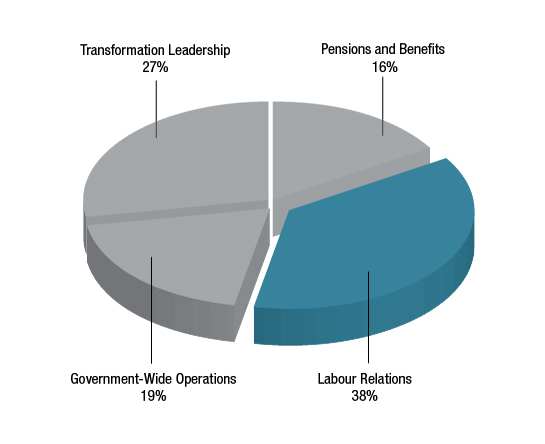
Figure 15A. Labour Relations as a proportion of the Secretariat's 2016–17 planned spending for Government-Wide Program Design and Delivery - Text version
| Pensions and Benefits | 16% |
|---|---|
| Labour Relations | 38% |
| Government-Wide Operations | 19% |
| Transformation Leadership | 27% |
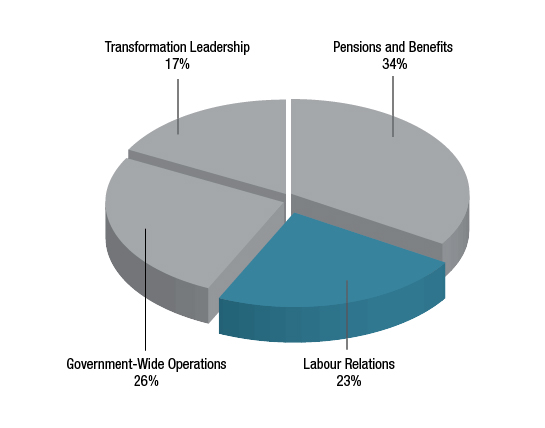
Figure 15B. Labour Relations as a proportion of the Secretariat's 2016–17 planned FTEs for Government-Wide Program Design and Delivery - Text version
| Pensions and Benefits | 34% |
|---|---|
| Labour Relations | 23% |
| Government-Wide Operations | 26% |
| Transformation Leadership | 17% |
| 2016–17 Planned Spending |
2017–18 Planned Spending |
2018–19 Planned Spending |
|---|---|---|
Table 74 Notes
|
||
| 20,180,576 | 18,619,047 | 19,393,577 |
| 2016–17 | 2017–18 | 2018–19 |
|---|---|---|
| 80 | 73 | 73 |
| Expected Results | Performance Indicators | Targets | Date to Be Achieved |
|---|---|---|---|
| Consistent and coherent compensation advice provided to organizations | Per cent of compensation decisions that are aligned with the principles of the Treasury Board's Policy Framework for the Management of Compensation | 90% | |
| Labour relations programs help government organizations to effectively execute their responsibilities | Per cent of government organizations that agree that the advice and support provided by the Secretariat's labour relations programs assist them in the execution of their responsibilities | 70% | |
| Good faith bargaining expectations are met | Number of founded bad faith bargaining complaints | Reduction from previous year |
Planning Highlights
The current round of collective bargaining negotiations started in . The Secretariat is negotiating the renewal of 27 collective agreements with 15 bargaining agents in the core public administration, and 32 collective agreements with 5 bargaining agents for the 14 separate agencies, excluding the Canadian Forces Non-Public Funds.
The planned priority initiatives are:
- Bargain in good faith with the Government of Canada's public sector unions.
- Support the introduction of a new labour relations regime for the Royal Canadian Mounted Police.
Sub-Program 1.3.3: Government-Wide Operations
Description
Through the Government-Wide Operations sub-program, the Secretariat provides other departments with access to shared operations, services, and information technology (IT) systems. The Secretariat also provides support to small departments where specific expertise is required or capacity limitations exist, in order to generate cost savings. The Secretariat develops and maintains IT tools that promote a more collaborative and efficient public service. The objective is to improve the efficiency of government organizations.
Activities under this sub-program are performed with groups of government organizations to facilitate government business. These services and systems are developed and maintained by the Secretariat, sometimes in partnership with other organizations.

Figure 16A. Government-Wide Operations as a proportion of the Secretariat's 2016–17 planned spending for Government-Wide Program Design and Delivery - Text version
| Pensions and Benefits | 16% |
|---|---|
| Labour Relations | 38% |
| Government-Wide Operations | 19% |
| Transformation Leadership | 27% |
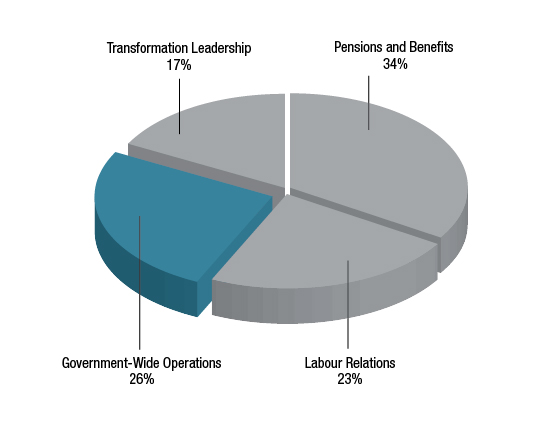
Figure 16B. Government-Wide Operations as a proportion of the Secretariat's 2016–17 planned FTEs for Government-Wide Program Design and Delivery - Text version
| Pensions and Benefits | 34% |
|---|---|
| Labour Relations | 23% |
| Government-Wide Operations | 26% |
| Transformation Leadership | 17% |
| 2016–17 Planned Spending |
2017–18 Planned Spending |
2018–19 Planned Spending |
|---|---|---|
| 10,085,537 | 10,680,686 | 10,816,980 |
| 2016–17 | 2017–18 | 2018–19 |
|---|---|---|
| 91 | 93 | 93 |
| Expected Results | Performance Indicators | Targets | Date to Be Achieved |
|---|---|---|---|
| Government-wide operations are managed effectively | Per cent of targeted organizations that have implemented services and systems developed or mandated by the Secretariat | 100% | |
| Per cent of public servants using collaborative tools (e.g., GCconnex, GCpedia) developed by the Secretariat | 55% |
Planning Highlights
The Secretariat will continue its ongoing work of providing departments with access to shared operations, services and information technology systems.
Sub-Program 1.3.4: Transformation Leadership
Description
Through the Transformation Leadership sub-program, the Secretariat reviews existing administrative systems and processes, and provides the platform for transformational initiatives across the Government of Canada for improvements, primarily (but not exclusively) in back office functions. The objective is to achieve better value for money and services by redesigning and transforming Government of Canada operations where the benefits outweigh the costs.
The Secretariat develops and pilots leading-edge enterprise tools, systems, and services to initiate change and identify lessons learned to support government-wide implementation.
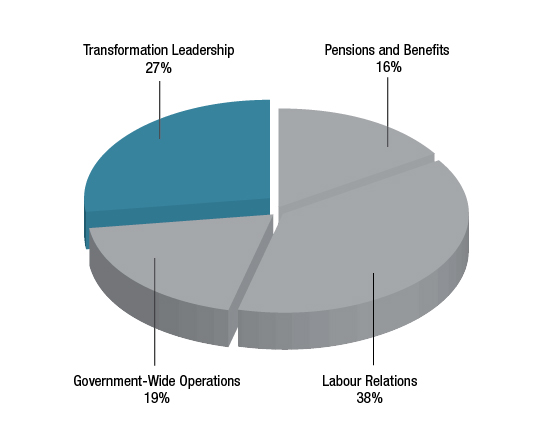
Figure 17A. Transformation Leadership as a proportion of the Secretariat's 2016–17 planned spending for Government-Wide Program Design and Delivery - Text version
| Pensions and Benefits | 16% |
|---|---|
| Labour Relations | 38% |
| Government-Wide Operations | 19% |
| Transformation Leadership | 27% |
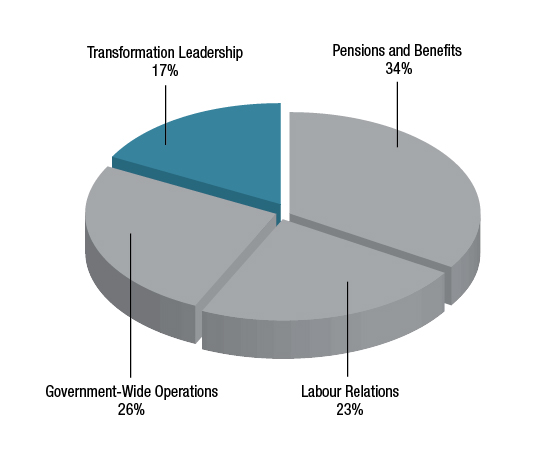
Figure 17B. Transformation Leadership as a proportion of the Secretariat's 2016–17 planned FTEs for Government-Wide Program Design and Delivery - Text version
| Pensions and Benefits | 34% |
|---|---|
| Labour Relations | 23% |
| Government-Wide Operations | 26% |
| Transformation Leadership | 17% |
| 2016–17 Planned Spending |
2017–18 Planned Spending |
2018–19 Planned Spending |
|---|---|---|
Table 84 Notes
|
||
| 13,093,505 | 11,196,738 | 13,422,049 |
| 2016–17 | 2017–18 | 2018–19 |
|---|---|---|
| 52 | 55 | 57 |
| Expected Results | Performance Indicators | Targetstable 86 note * | Date to Be Achieved |
|---|---|---|---|
Table 86 Notes
|
|||
| Canadians have better access to government data | Per cent of federal data publicly released | To be determined | |
| Transformational initiatives improve Government of Canada operations | Per cent of targeted departments leveraging enterprise back office systems | To be determined | TBD |
Planning Highlights
Although the government releases more information than ever before, an untapped wealth of information could be used to increase transparency, build public trust and spur innovation. Opportunities also exist to improve the ability of the government to manage in a way that is informed by reliable, enterprise-wide data, business analytics and performance information.
Transformation of the back office processes in the areas of human resources management, financial management and information management will facilitate coherent and consistent government operations and processes that support service delivery to Canadians and ultimately make data more accessible to parliamentarians.
The planned priority initiatives are:
- Accelerate and expand open data initiatives and make government data available digitally and open by default (subject to Cabinet and funding approvals).
- Ensure successful implementation of initiatives to transform enterprise-wide back office functions (subject to Cabinet and funding approvals).
Program 1.4: Government-Wide Funds and Public Service Employer Payments
Description
The Government-Wide Funds and Public Service Employer Payments program accounts for funds that are held centrally to supplement other appropriations, from which allocations are made to, or payments and receipts are made on behalf of, other federal organizations. These funds supplement the standard appropriations process and meet certain responsibilities of the Treasury Board as the employer of the core public administration, including employer obligations under the public service pension and benefits plans.
The administration of these funds falls under the Expenditure Analysis and Allocation Management sub-program and the People Management Policy sub-program, but their financial resources are shown separately in the Secretariat's Program Alignment Architecture for visibility and reporting purposes.
| 2016–17 Main Estimates |
2016–17 Planned Spending |
2017–18 Planned Spending |
2018–19 Planned Spending |
|---|---|---|---|
| 6,333,254,397 | 6,333,254,397 | 6,333,254,397 | 6,333,254,397 |
This program consists of two components:
1) Government-Wide Funds (Central Votes)
| 2016–17 Main Estimates |
2016–17 Planned Spending |
2017–18 Planned Spending |
2018–19 Planned Spending |
|---|---|---|---|
Table 88 Notes
|
|||
| 3,553,193,000 | 3,553,193,000 | 3,553,193,000 | 3,553,193,000 |
2) Public Service Employer Payments and Various Statutory Items
| 2016–17 Main Estimates |
2016–17 Planned Spending |
2017–18 Planned Spending |
2018–19 Planned Spending |
|---|---|---|---|
| 2,780,061,397 | 2,780,061,397 | 2,780,061,397 | 2,780,061,397 |
| 2016–17 | 2017–18 | 2018–19 |
|---|---|---|
| N/A | N/A | N/A |
| Expected Results | Performance Indicators | Targets | Date to Be Achieved |
|---|---|---|---|
| Allocations and payments managed by the Secretariat are made as required | Per cent of allocations and payments made | 100% |
Planning Highlights
The Secretariat will continue to deliver on legislative requirements related to Treasury Board Vote 20 – Public Service Employer Payments. Related information on planned spending is presented in Section III: Supplementary Information. Other contingency funds are available to other government departments, if required, and expenditures are identified under their programs (ongoing).
Internal Services
Description
Internal services are groups of related activities and resources that are administered to support the needs of programs and other corporate obligations of an organization. Internal services include only those activities and resources that apply across an organization, and not those provided for a specific program. The groups of activities are Management and Oversight Services; Communications Services; Legal Services; Human Resources Management Services; Financial Management Services; Information Management Services; Information Technology Services; Real Property Services; Materiel Services; and Acquisition Services.
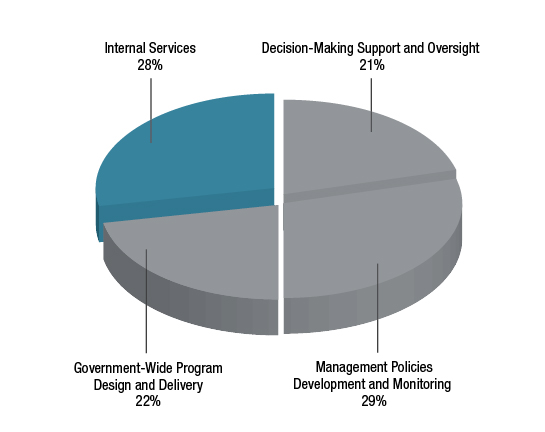
Figure 18A. Internal Services as a proportion of the Secretariat's 2016–17 planned operational spending - Text version
| Decision-Making Support and Oversight | 21% |
|---|---|
| Management Policies Development and Monitoring | 29% |
| Government-Wide Program Design and Delivery | 22% |
| Internal Services | 28% |

Figure 18B. Internal Services as a proportion of the Secretariat's 2016–17 planned FTEs - Text version
| Decision-Making Support and Oversight | 22% |
|---|---|
| Management Policies Development and Monitoring | 27% |
| Government-Wide Program Design and Delivery | 20% |
| Internal Services | 31% |
| 2016–17 Main Estimates |
2016–17 Planned Spending |
2017–18 Planned Spending |
2018–19 Planned Spending |
|---|---|---|---|
Table 94 Notes
|
|||
| 66,661,047 | 65,624,896 | 69,130,661 | 60,611,147 |
| 2016–17 | 2017–18 | 2018–19 |
|---|---|---|
| 563 | 568 | 560 |
Planning Highlights
The Secretariat has an ambitious agenda to deliver, which includes multiple complex priority initiatives that need to be completed within very short time frames. This requires strong leadership and employees who have the right skills and competencies to excel in their work. It also requires an agile and collaborative organization with lean and efficient business practices that foster innovation and intelligent risk taking, and that get faster and better results for invested efforts. To succeed, the Secretariat will build on This is TBS, which includes Blueprint 2020 initiatives to further accelerate its internal transformation.
The planned priority initiatives are:
- Support a high-performing workforce that is agile and that operates in a respectful and healthy work environment each and every day.
- Foster a more dynamic, open and networked workplace, which includes renewing and consolidating office space within Workplace 2.0 standards, and re-engineering back office technology to better manage information.
- Adopt lean and efficient business practices that create opportunities for transferring skills and knowledge, streamlining processes, and empowering employees.